The 7 Best Ribbon Microphones | Musician Nerd
Updated on Dec 22, 2021
If you’re looking for the best ribbon microphones on the market, you’ve come to the right place. While less common than your standard condenser and dynamic mics, the market still has a wide range of options for these, and it can be not very clear to find a good choice if you don’t know what to look for.
We’ve rounded up some of our favorite options for you to read about and make the best decision for your next purchase. Because we all have varying budgets, we picked options from different price ranges and compared them with their closest competitors to ensure you’re getting the best bang for your buck.
By the end of this article, you’ll not only know the best options, but you’ll have gained some serious knowledge about ribbon microphones in general. Without further due, let’s get into it, starting with one of my favorites from Audio-Technica.
The Best Ribbon Microphones
Our Picks
- 1. Audio-Technica AT4081 Best Overall
- 2. Shure KSM313/NE Best High End
- 3. sE Electronics Voodoo VR1 Budget Choice
- 4. Beyerdynamic M160 Led Zeppelin Approved
- 5. Rode NTR Best Under $1000
- 6. Avantone CR-14 Budget Choice
- 7. Royer R-121 High End Choice
1. Audio-Technica AT4081
The Audio-Technica AT4081 is one of the best ribbon microphones I’ve ever used for audio recording. The price is relatively average for a ribbon mic, but the recordings you can make with this one is incredible, whether for vocals or instruments.
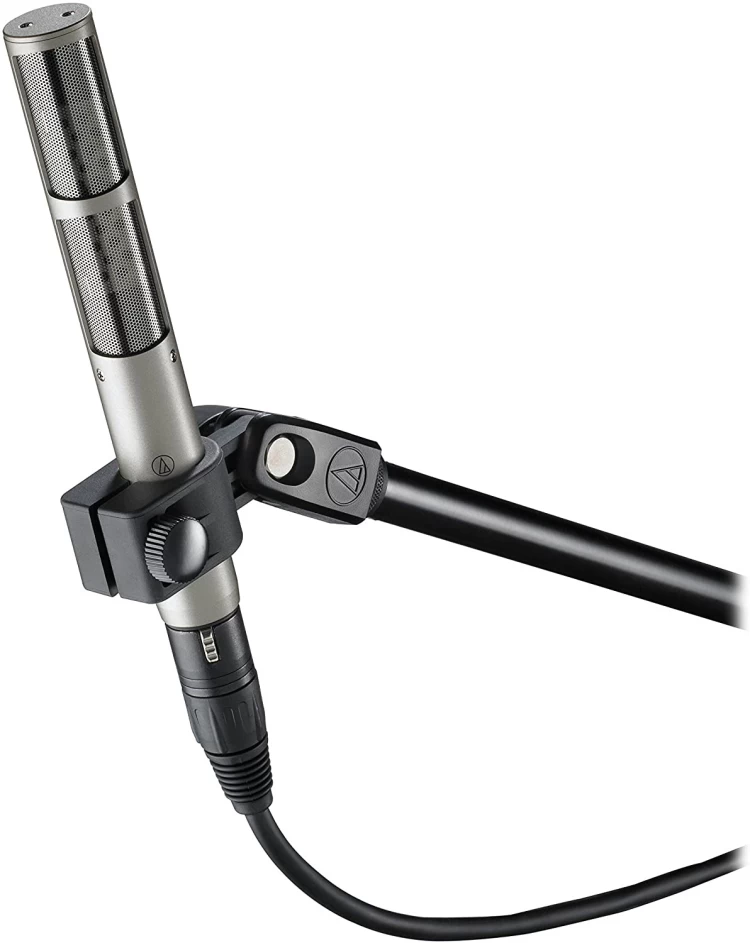
Audio-Technica AT4081 Ribbon Microphone With Stand
The Audio-Technica AT4081 uses a low-profile stick design for maximum versatility in terms of placement. This is similar to how boom microphones work, as it limits the bulkiness that a lot of other studio microphones have.
Audio-Technica uses 18 patent-pending designs including a proprietary micro-linear ribbon imprint that offers superior durability. The dual-ribbon construct increases the level of sensitivity, which means more depth & richness to your audio.
Thanks in part to the powerful N50 neodymium magnets, you’ll be getting loud but warm audio recordings with the Audio-Technica AT4081. If you’re looking for a mid-range ribbon microphone for the best recordings, this is the one for you.
2. Shure KSM313/NE
The Shure KSM313/NE is my favorite ribbon microphone, by far. I have it listed as number 2 because of the high cost, but wow, is this a powerful mic. I’ve been using one for a while now, as I wanted to hop on the whole “ribbon microphone” wagon, and have to say; it sounds so good on vocals.
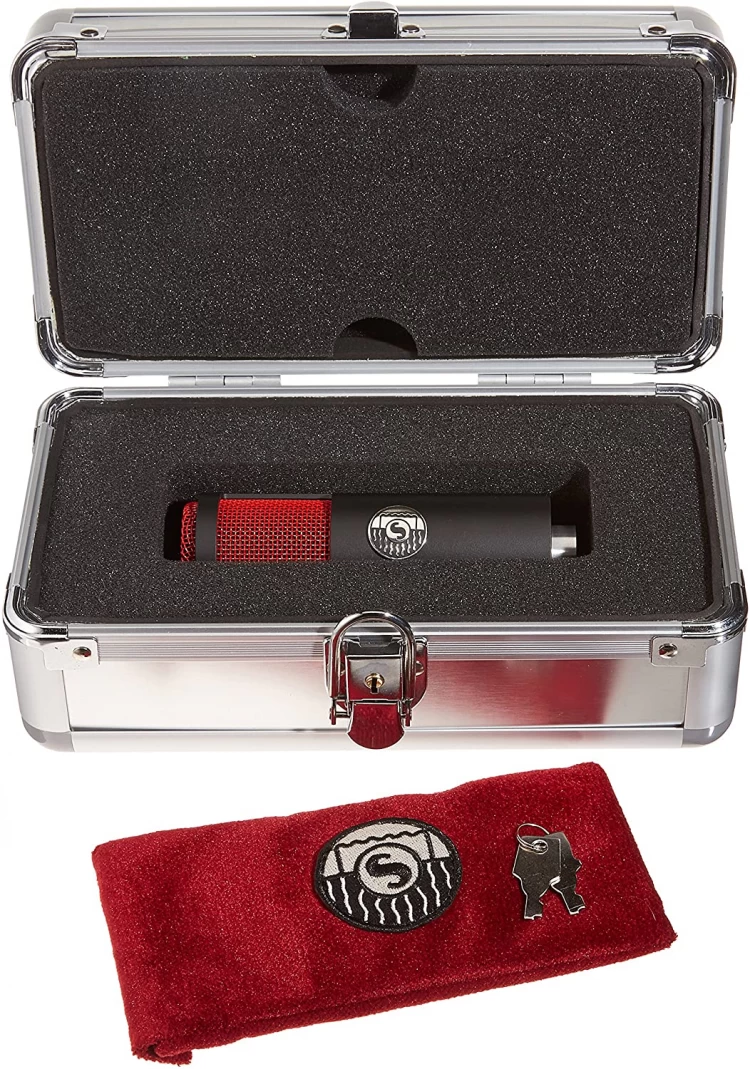
Shure KSM313/NE Dual Voice Ribbon Microphone With Case
The Shure KSM313/NE uses a bi-directional polar pattern, which helps produce superior sounding audio with the some of the best off-axis rejection you could ask for. The frequency response rate of 30 to 15000Hz with an SPL of 146 offers a superior transient response in vocals.
Like the Audio-Technica above, Shure put a lot of work into developing a high-end ribbon, which uses a proprietary roswellite ribbon material rather than traditional foil ribbons, offering incredible durability & shape. This allows the microphone to withstand extreme sound pressure levels (SPL).
The last thing I want to note is how beautiful the Shure KSM313/NE looks. The red grille around the capsule gives off such a unique vibe that we don’t always find in microphones. I’ve always been a big fan of mic aesthetic but find beauty’s like this hard to come by. Overall, this ribbon microphone sounds perfect, works great, and looks amazing.
3. sE Electronics Voodoo VR1
The sE Electronics Voodoo VR1 ribbon microphone is much more affordable than others on this list, yet still sounds better than a lot of condenser microphones I’ve used.
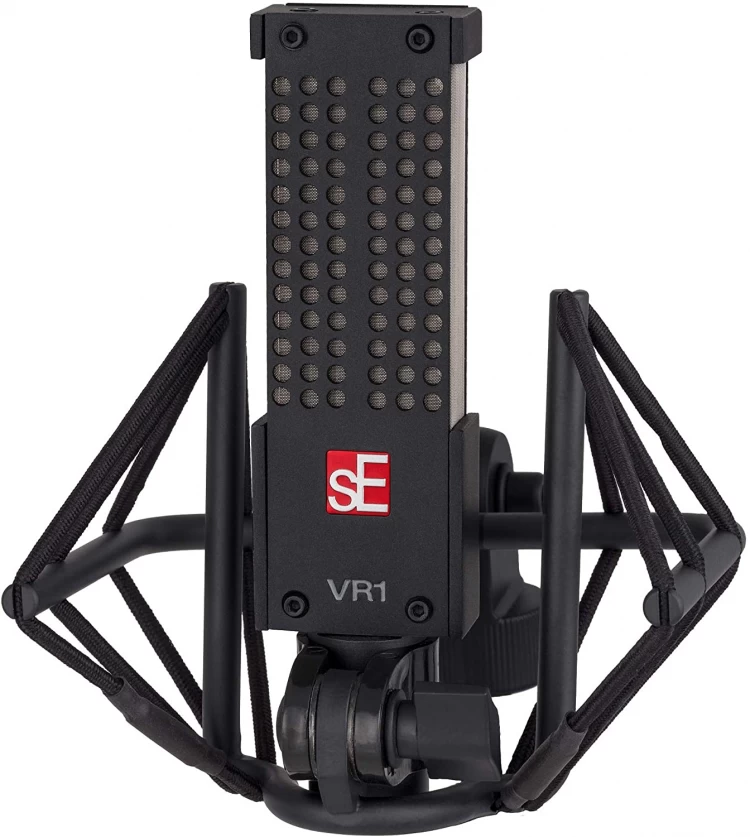
sE Electronics Voodoo Vr1 Ribbon Microphone In Shockmount
The high sensitivity and wide-range frequency response offer true depth in your recordings, allowing you to bring out the best from your vocals or instrument. I’ve been using the sE Electronics Voodoo VR1 for acoustic instrument recordings, and found it blows a lot of other microphones out of the water.
A unique factor in this ribbon microphone is that it excels at high-end frequencies. The mechanical design allows the microphone to achieve an extended frequency response, giving you that crisp, natural sound from your highs. This is why I really like to use it for recording my acoustic guitar, though I imagine it’s great for cymbals too.
Overall, for a more affordable ribbon microphone, it has a lot going for it. I will say it veers off from the traditional “ribbon” style a bit, but that’s likely because they wanted to keep the mic under $500 while still standing out. I think they’ve done just that.
4. Beyerdynamic M160
The Beyerdynamic M160 is another mid-range ribbon microphone that offers incredibly high-quality recordings. Using a hyper cardioid polar pattern, the microphone can focus on you, rather than the background.
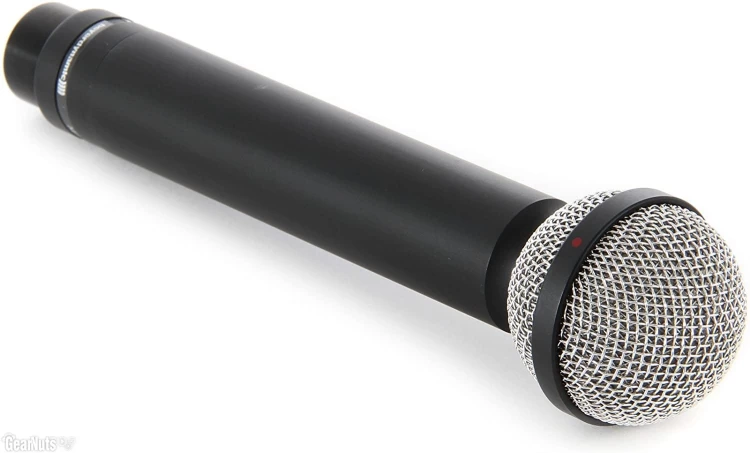
Beyerdynamic M160 Double Ribbon Microphone
Similar to the Audio-Technica AT4081, the Beyerdynamic M160 uses a dual-ribbon microphone transducer to maintain the highest possible quality, with an extended frequency response. This full range of frequencies makes the Beyerdynamic M160 very versatile, which is why you can use it for vocals, guitar cabs, and even the drums.
Like the sE Electronics Voodoo VR1, this microphone breaks away from the traditional “dark” sound, excelling on the high end. This led to popularity amongst classic rock bands, having this microphone featured by Led Zeppelin on their hit song “When The Levee Breaks.” That should speak volumes!
Overall, the Beyerdynamic M160 is an amazing microphone with unlimited potential. David Bowie used it for vocals, while other bands like Led Zeppelin, Jimi Hendrix & Pink Floyd used it for instruments. A beautiful microphone indeed.
5. Rode NTR
The Rode NTR is one of my favorite ribbon microphones thanks to the incredibly sensitive and high-quality capsule design.

Rode NTR Premium Ribbon Microphone
What’s interesting about the Rode NTR is that it uses a bi-directional polar pattern, which results in a superior off-axis rejection. The frequency range is very wide, at 20 – 20,000Hz, which results in a deep, full & warm sounding audio.
While excelling on the high-end, the Rode NTR is also capable of recording more sensitive sound sources, and loud ones as well, with a maximum SPL of 130dB. The highly sensitive ribbon element offers an incredible transient response, giving your recordings superior accuracy.
At the end of the day, the Rode NTR is one of the best ribbon microphones under $1000. I love the quality of my recordings when I use them, particularly with vocals.
6. Avantone CR-14
The Avantone Pro C-14 is a highly affordable ribbon microphone with great sound and beautiful design. It uses similar features as some other high-end models and included multiple accessories.
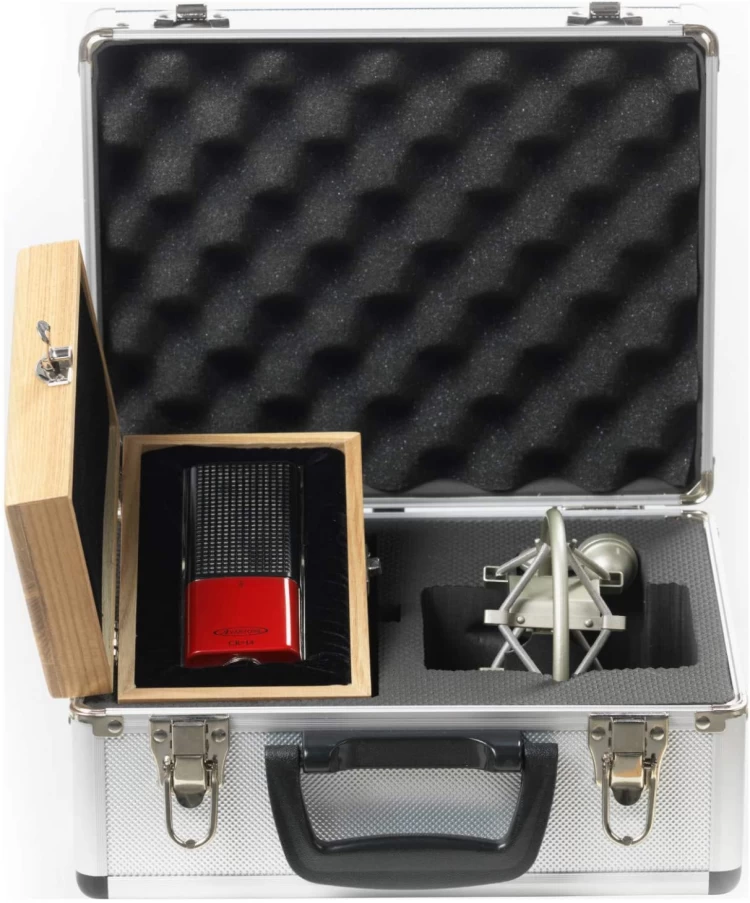
Avontone Pro CR-14 With Shockmount And Case
The Avantone Pro C-14 uses a bi-directional polar pattern, giving it a narrow pickup angle for isolating a single voice. It’s also useful for instruments surrounded by other noise, as it helps keep the focus. It’s an interesting technique that isn’t used all too often.
The dual low-mass ribbon element offers incredible sensitivity, giving your recordings more depth and accuracy. The transient response is very rapid so that high vibration sound sources will be recorded with ease. The maximum SPL is 148dB, which gives the Avantone Pro C-14 an edge for loud sources.
Overall, it’s a great budget ribbon microphone. I’d choose it over comparably priced condenser microphones for vocals.
7. Royer R-121
The Royer R-121 ribbon microphone is a well-known beastly mic, offering superior audio recordings in most settings.

Royer Labs R-121 Live Ribbon Microphone
One unique feature worth mentioning is their proprietary offset ribbon transducer, which is the first of its kind that positions the ribbon element by the front of the capsule. This allows the ribbon more room to move within the magnetic field while keeping the full frequency response for high SPL recordings. In other words, this technology will enable you to record loud sources with massive accuracy & depth as the ribbon has more space to move.
The frequency response rate is more in line with how ribbon microphones typically work, at 30- 15,000Hz. This range results in a warm, rich sound, very signature to ribbons.
The Royer R-121 is expensive, for sure, but you’re getting top of the line quality. Like the Shure we mentioned earlier, this is a high-end microphone that offers massive quality over all else.
What Is a Ribbon Microphone?
Ribbon microphones are actually just a type of dynamic mic. The difference from the others is that they use a thin strip of metal within the capsule (for capturing sound waves) rather than a diaphragm attached to a moving coil. To understand this better, you first need to know how microphones catch sound waves and turn them into usable audio.

Pen And Paper About Notes
While the method of converting sound into electrical signals varies by type of microphone, the general idea is that something within the capsule must be impacted by the soundwaves (from your voice, for example). Whatever this impact looks like will create movement within the microphone capsule, and the metals within convert this to electrical signals. So, let’s get a little more specific on how a ribbon microphone would do this.
A ribbon is a small sheet of metal suspended In the capsule, as we mentioned earlier. This metal is 50 times thinner than human hair, which is why your voice quickly moves it. This process is similar to how condenser microphones work, and so you’ll find ribbon mics to have excellent frequency response and rapid transient response. Their overall characteristics are much different, however.
Conclusion
Ribbon microphones are enjoyable to work with and add a unique and powerful sound to your recordings. It’s sad to see less and less on the market these days, but the ones we’ve listed for you sound terrific. I love working with ribbons for my recordings, and if this is your first one, congratulations! You’re going to love it.
If you could find what you were looking for from our list, let us know in the comments below. We’d love to hear how it’s working for you. If you have any suggestions you think we’ve missed, let us know, we’re always open to new ideas. Good luck!
Posted on Dec 13, 2020
Recording
Have questions for us? Email us at info@musiciannerd.com
